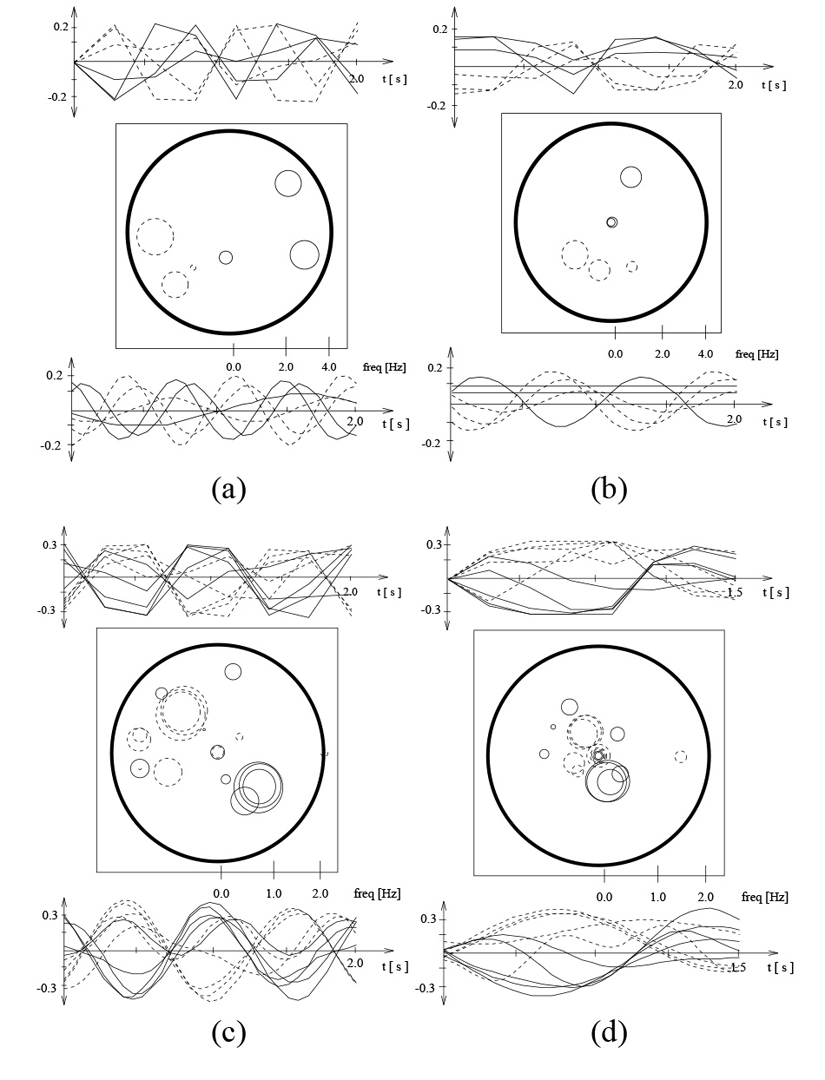“Automated learning of muscle-actuated locomotion through control abstraction” by Grzeszczuk and Terzopoulos
Conference:
Type(s):
Title:
- Automated learning of muscle-actuated locomotion through control abstraction
Presenter(s)/Author(s):
Abstract:
We present a learning technique that automatically synthesizes realistic locomotion for the animation of physics-based models of animals. The method is especially suitable for animals with highly flexible, many-degree-of-freedom bodies and a considerable number of internal muscle actuators, such as snakes and fish. The multilevel learning process first performs repeated locomotion trials in search of actuator control functions that produce efficient locomotion, presuming virtually nothing about the form of these functions. Applying a short-time Fourier analysis, the learning process then abstracts control functions that produce effective locomotion into a compact representation which makes explicit the natural quasi-periodicities and coordination of the muscle actions. The artificial animals can finally put into practice the compact, efficient controllers that they have learned. Their locomotion learning abilities enable them to accomplish higher-level tasks specified by the animator while guided by sensory perception of their virtual world; e.g., locomotion to a visible target. We demonstrate physics-based animation of learned locomotion in dynamic models of land snakes, fishes, and even marine mammals that have trained themselves to perform “SeaWorld” stunts.
References:
1. L. S. Brotman and A. N. Netravali. Motion interpolation by optimal control. Proc. ACM SIGGRAPH, 22(4):309-407,1988.
2. J. I. Castro. The Sharks of North American Waters. Texas Unviersity Press, 1983.
3. M. E Cohen. Interactive spacetime control for animation. Proc. ACM SIGGRAPH, 26(2):293-301,1992.
4. C. H. Ernst. Venomous Reptiles of North America. Smithsonian Institution Press, 1992.
5. C.J. Gob and K. L. Teo. Control parameterization: A unified approach to optimal control problems with general constraints. Automatica, 24:3-18,1988.
6. R. Grzeszczuk. Automated learning of muscle based locomotion through control abstraction. Master’s thesis, Dept. of Comp. Sci., Univ. of Toronto, Toronto, ON, January 1994.
7. R. McNeill Alexander. Exploring Biomechanics: Animals in Motion. Scientific American Library, New York, 1992.
8. G.S.E Miller. The motion dynamics of snakes and worms. Proc. ACM SIGGRAPH, 22(4): 169-177,1988.
9. J. T. Ngo and J. Marks. Spacetime constraints revisited. Proc. ACM SIGGRAPH, 27(2):343-351,1993.
10. M. G. Pandy, E C. Anderson, and D. G. Hull. A parameter optimization approach for the optimal control of large-scale musculoskeletal systems. Transactions of the ASME, 114(450), November 1992.
11. Best EB. and Abernethy R. B. Heaviside’s dolphin. In Handbook of Marine Mammals, volume 5, pages 289-310. Academic Press, 1994.
12. W.H. Press, B. Flannery, et al. Numerical Recipes: The Art of Scientific Computing, Second Edition. Cambridge University Press, 1992.
13. J.E. Rendal, Allen G. R., and Steene R. C. Fishes of the Great Barrier Reef and Coral Sea. Univ. of Hawaii Press, Honolulu, HI, 1990.
14. G. Risdale. Connectionist modeling of skill dynamics. Journal of Visualization and Computer Animation, 1 (2):66-72,1990.
15. K. Sims. Evolving virtual creatures. Proc. ACM SIGGRAPH, pages 15-22,1994.
16. D. Terzopoulos, X. Tu, and R. Grzeszczuk. Artificial fishes: Autonomous locomotion, perception, behavior, and learning in a simulated physical world. Artificial Life, 1 (4):327-351, 1994.
17. X. Tu and D. Terzopoulos. Artificial fishes: Physics, locomotion, perception, behavior. Proc. ACM SIGGRAPH, pages 43-50, 1994.
18. M. van de Panne and E. Fiume. Sensor-actuator networks. Proc. ACM SIGGRAPH, 27(2):335-343,1993.
19. A. Witkin and M. Kass. Spacetime constraints. Proc. ACM SIG- GRAPH, 22(4): 159-167, 1988.




